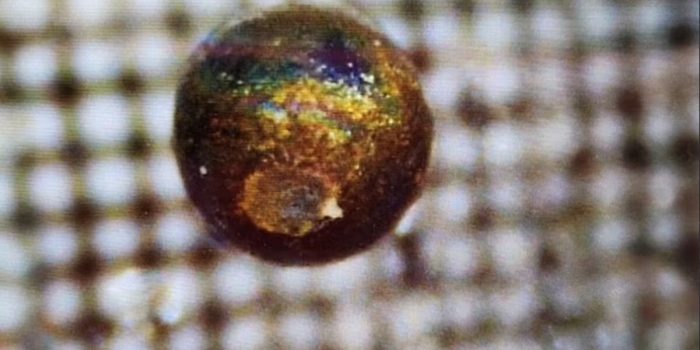Astronomer Humberto Campins supports claims by Harvard physicist Avi Loeb that fragments recovered from the Pacific Ocean floor might originate from an alien planet beyond our solar system. Campins believes these fragments are likely from a meteorite that entered our solar system from interstellar space. Loeb’s discovery has sparked controversy within the scientific community with some experts supporting his findings and others disputing them.

‘It’s enough to be excited about. My hat’s off to these people,’ the University of Central Florida astronomer told Cosmos.
‘I think this was a meteorite that came from outside the solar system.’
scientific community, with some experts supporting his findings and others disputing them.
Loeb suggests that these metallic spheres possess a composition unlike any known natural or man-made materials, indicating potential extraterrestrial origins. He even proposes that a 2014 meteorite splashdown off Papua New Guinea could have been an alien spacecraft. Campins, however, leans toward the idea that the fragments come from a distant exoplanet or interstellar asteroid, basing his assessment on the elemental composition.

While Loeb acknowledges that Campins’ explanation is plausible, he doesn’t dismiss the possibility that the spheres could indicate signs of higher intelligence. Loeb sees this as a historic moment, marking the first time humans have encountered materials from an object arriving on Earth from outside the solar system.
Professor Michael Garrett, of the University of Manchester, told MailOnline: ‘I really admire Avi’s enthusiasm in the search for extraterrestrial intelligence but I’d be surprised if this recent effort is going to produce conclusive evidence that extraterrestrial spacecraft re-entering or crashing on Earth are responsible for these spheroids.
‘I think its unlikely any extraterrestrial spacecraft have crashed here or indeed elsewhere in the solar system.
‘I think it’s more likely these spheroids have a more natural explanation which is what scientists in the field are saying.’
Dr Matthew Genge, of Imperial College London, said he was ‘very skeptical’ about the alleged discovery.
‘The seafloor is littered with spherules, some natural and some artificial, from satellite debris, rocket exhaust, windblown material from industry, or even nuclear tests. You can find all sorts of odd particles in the deep,’ he told MailOnline.

Yet, skepticism remains. Some experts, like Michael Garrett and Matthew Genge, argue that these metallic spherules could have various origins, including satellite debris, industrial waste, or even nuclear tests. They point out the diverse array of alloys and stress that conclusive evidence published in reputable journals is crucial to support such extraordinary claims.

Peter Brown questions whether these spherules could have survived the impact and challenges the assertion that the meteorite originated from outside the solar system. He suggests that the estimated speed of the meteorite’s entry may have been inaccurately calculated. Furthermore, he highlights that spherules are found across the ocean floor and cannot be definitively linked to specific meteor impacts.
The discovery remains in a pre-print stage, awaiting peer review, leading some scientists to distance themselves from Loeb’s work. Some experts feel that the sensationalism surrounding his claims detracts from the scientific process.
The saga began nearly a decade ago when a meteor, IM1, entered Earth’s atmosphere. Loeb and his team, supported by Charles Hoskinson, embarked on a mission to recover fragments from the meteor. They collected hundreds of tiny metallic spheres with unique compositions. These spheres contain elements like beryllium, lanthanum, and uranium in unusual proportions, hinting at an interstellar origin.
Loeb’s findings have ignited debates about the nature of these fragments, with some supporting his claims while others demand more concrete evidence. Interstellar objects like these offer insights into distant solar systems that are otherwise inaccessible, holding immense significance for astronomy. Despite the controversy, Loeb’s work highlights the boundary-pushing nature of scientific inquiry and the pursuit of understanding the cosmos.


